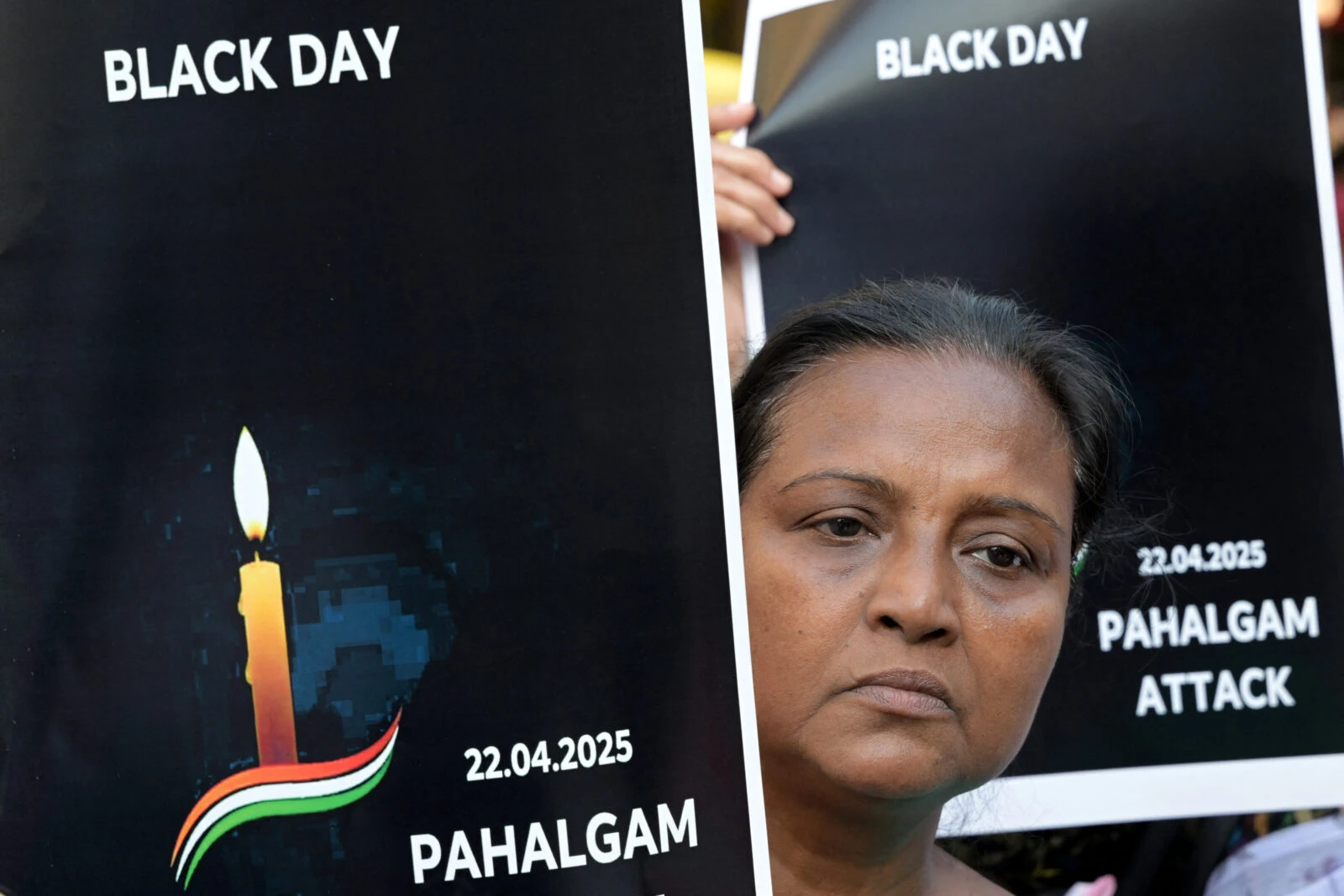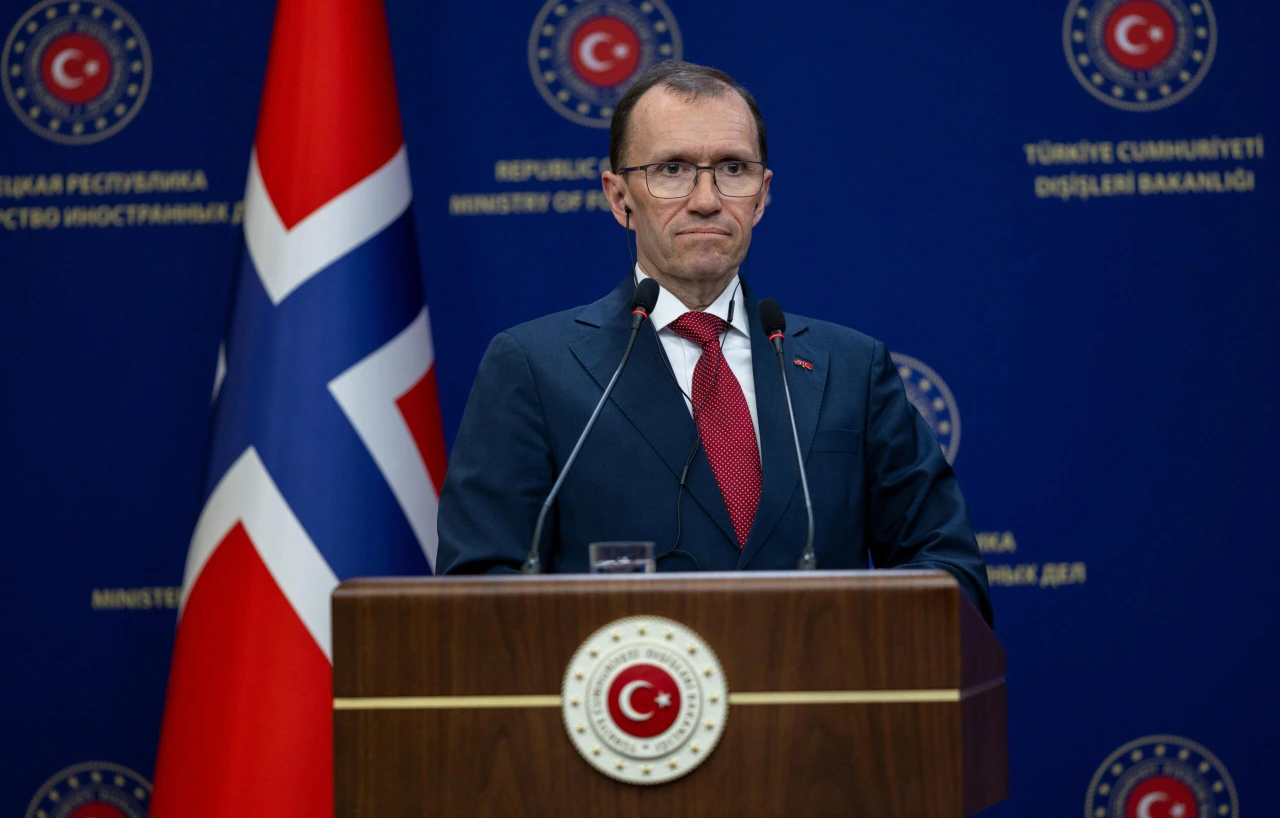India-Pakistan tensions escalate after Kashmir attack: What’s at stake in South Asia?
 An Indian paramilitary vehicle escorts tourists after an attack in Pahalgam, about 90kms (55 miles) from Srinagar on April 23, 2025. (AFP Photo)
An Indian paramilitary vehicle escorts tourists after an attack in Pahalgam, about 90kms (55 miles) from Srinagar on April 23, 2025. (AFP Photo)
India-Pakistan tensions have reached a dangerous boiling point following a deadly militant attack in the Indian-administered side of Kashmir, which claimed the lives of 26 people.
The Indian government blamed Pakistan for the attack and vowed to target not only the attackers but also their alleged sponsors.
The situation between the two nuclear-armed nations is drawing comparisons to the 2019 Pulwama-Balakot episode, where a similar attack triggered Indian airstrikes in northern Pakistan.
With Indian leadership using increasingly aggressive language, including Defense Minister Rajnath Singh’s call for a “strong response,” the political mood in New Delhi appears to be leaning toward a kinetic response, raising global concerns about potential escalation in a highly volatile region.
Diplomatic breakdown: New India-Pakistan tensions create chaos
The diplomatic backlash has followed a pattern of rapid tit-for-tat fashion. Pakistan has banned Indian flights from its airspace, revoked visas, and closed a key border crossing, mirroring similar actions taken by India, which reflects a broader deterioration of communication and trust between the two sides.
The most serious development, however, is India’s threat to withdraw from the Indus Waters Treaty, a pact critical for water-sharing between the two countries. With 80% of Pakistan’s agriculture dependent on these waters, any significant disruption could have catastrophic humanitarian consequences.
Pakistan has warned that tampering with water flows would constitute an act of war, signaling that the stakes now extend well beyond conventional military concerns.

Change in militancy tactics raises new security concerns
The targeting of civilians in a popular tourist area marks a sharp departure from the insurgency’s previous strategy.
Traditionally, Kashmiri militants avoided harming tourists, recognizing the economic lifeline that tourism provides to the region. Indian officials see this shift as evidence of a more aggressive and externally supported operation, one they believe could not have occurred without assistance from across the Line of Control.
Indian security experts suggest that the attackers likely crossed the heavily fortified cease-fire line with support from Pakistan’s military.
Although the Resistance Front (TRF), a lesser-known group, has claimed responsibility, it is widely thought to be either a splinter group of or a front for the Lashkar-e-Taiba (LeT), a well-known Salafi organization.
The TRF was reportedly formed in reaction to the Indian government’s 2019 decision to revoke Kashmir’s semi-autonomous status. Additionally, the attack follows closely behind the Indian government’s passing of the Waqf (Amendment) Act, which aims to alter the management of Muslim charitable assets, including mosques, madrassas, graveyards, and orphanages, further inflaming tensions.
The symbolic and economic impact of the attack—crippling tourism in Kashmir—is viewed as a deliberate attempt to destabilize the region in a new and dangerous way.

Pakistan denies involvement, questions Indian narrative
Pakistan continues to deny any role in the attack and questions India’s attribution, particularly given the distance of the attack site—almost 200 kilometers (124.27 miles) from the Line of Control. Pakistani officials have also highlighted the presence of over 500,000 Indian security personnel in the Kashmir valley, arguing that such a heavily surveilled zone should be capable of preventing militant activity if the threat were entirely external.
Critics in Pakistan point to the timing of the attack, questioning how it would benefit Islamabad during a sensitive diplomatic moment, especially with the U.S. VP JD Vance visiting India.
Indian media and political climate push toward retaliation
Indian news outlets have amplified public anger, creating an environment where restraint may be politically costly. Prime Minister Narendra Modi’s strongman image is under pressure following a lackluster electoral performance, and the nationalist base expects a decisive, perhaps even dramatic, response.
The climate is similar to 2019, when media fervor and national grief helped justify airstrikes on Pakistani soil.
Recent comments from Singh, India’s defense minister, further reflect a shift from mere defensive posturing to active deterrence, where those “sitting behind the scenes” will also be held accountable.
Could another India-Pakistan military clash be imminent?
Analysts like retired Lt. Gen. Singh Hooda of the Indian Army warn that India could repeat or even surpass its 2019 military playbook. The Balakot strikes, which caused no casualties but symbolized resolve, were followed by Pakistan’s retaliatory airstrikes and the dramatic capture and release of an Indian pilot.
Today, similar calls for limited yet visible military action are being heard, possibly in the form of targeted missile or air attacks on alleged militant sites.
Pakistan, however, has stated it is “ready for any Indian misadventure,” maintaining high alert. Officials warn that any military action could provoke a proportionate response, with both sides spiraling into escalation before diplomatic mechanisms can catch up.

India threatens Indus Waters Treaty
India’s threat to revise or suspend the Indus Waters Treaty is emerging as a potent non-military lever. Such a move would severely strain Pakistan’s water-dependent agriculture sector and could be interpreted as economic warfare.
Indian strategists argue that this approach, though less visible than an airstrike, could inflict long-term pressure without immediate battlefield risks.
In many ways, the strategic use of water could trigger consequences more damaging and longer-lasting than a military clash, especially if it destabilizes food production and leads to broader humanitarian fallout.
Sharif’s Türkiye and Saudi Arabia visits, diplomatic outreach
In this fragile context, Pakistani Prime Minister Shehbaz Sharif’s recent visits to Saudi Arabia and Türkiye take on strategic significance. The diplomatic moves are widely viewed as attempts to solidify Pakistan’s regional alliances, especially at a time when India is strengthening its ties with the U.S., Israel, and Gulf states like the UAE.
The geopolitical center of gravity in South Asia is shifting, and it seems more likely that it’s no longer a purely bilateral India-Pakistan rivalry, and more entangled in regional and global alignments.
Economically, Pakistan remains vulnerable, making Riyadh’s continued financial support a critical lifeline. With fears of sanctions, trade disruptions, or even war-related economic shocks, Sharif’s Saudi outreach may aim to secure both liquidity and leverage.
Moreover, Saudi Arabia’s good relations with India uniquely position it to play a potential mediating role if open hostilities break out or diplomatic backchannels are required.
If the global diplomatic silence on the conflict indicates anything, it is that one party with leverage has to intervene and open channels of communication before further deterioration sets in.



